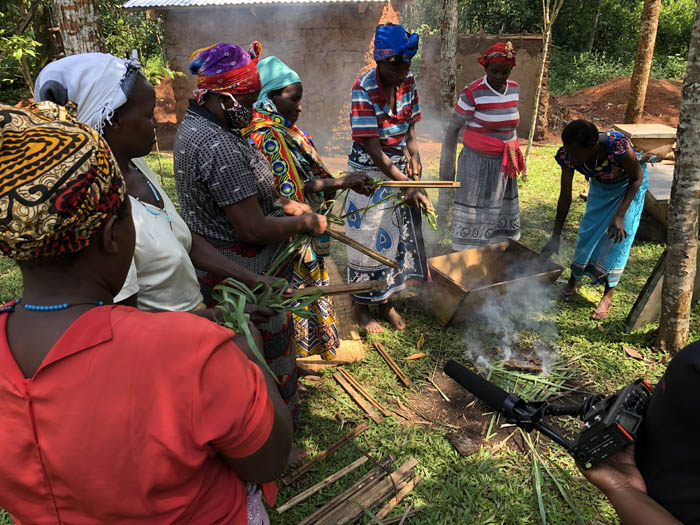
Tour of the beehive fence and elephant trench, Kibale Forest
Interact with the local communities who use bees to protect their crops and property from elephants!
Over 2,000 hives have been distributed to communities around the park who are affected by elephants that cause considerable crop damage. This destruction causes hostility between elephants and people, hence the bees are essential in adding extra protection to the farmer and his crops. How does it work? The wooden beehives are hung along a metal wire next to the elephant trench. If an elephant pushes hard against this ‘beehive fence’, it may upset the bees. The fence therefore serves as a physical barrier – and one with attitude – if the bees are disturbed. The African honeybee is highly aggressive. Elephants will therefore tend to avoid bees.
Scroll down to read all about the Bees and Elephants Tour!
Key attractions of the Bees and Elephants tour
- Experienced and knowledgeable local guide
- Visiting the bee keeping sites. Participate in harvesting and tasting the honey (according to the season of your visit).
- Tour coffee plantation and medicinal plant garden
- See baboons, monkeys and other wildlife
- Beautiful agricultural landscape (crops, settlement patterns and scenic beauty of Kibale National Park)
- The Busabura Women’s Group who have been working with the park to promote conservation and sustainable natural resource management through dance and drama.
- Storytelling by elders and cultural leaders
- Take part in traditional cooking experience
- Meet the traditional healers
- Taste honey and local brew (Enturire, Tonto, Enguli and Bushera)
- Buy local crafts and tropical organic honey

Where does the Bees and Elephants Tour take place?
The tour is conducted around the villages of Kyabakwerere, Busabura and Kabegemire right at the edge of Kibale National Park in Western Uganda. The nearest town is Bigodi. Villages are approximately one hour’s drive from Fort Portal.
How long is the Bees and Elephants tour?
The tour takes 1 – 2 hours depending on the interests of the visitor(s).
How much is the Bees and Elephants tour?
- 2 – 4 visitors. USD 15 per person (or UGX equivalent).
- Groups of (5 visitors or more). USD 12 per person (or UGX equivalent).
- Fee includes guide fee and a taste of the organic tropical forest honey (subject to seasonal availability).
How do I book the Bees and Elephants tour?
If you would like to make a booking, please give us two days’ notice. Communities practice subsistence agriculture and spend most of their days tending their gardens. It is important to make prior arrangement through advance booking.
Who do I contact to book the Bees and Elephants tour?
Please call or email Valence Turyatunga (telephone number and email above). Please make sure your booking has been confirmed before you arrive.
Do want to learn more about this project?
Watch this short video all about the bee hive fence and its originator George Owoyesigire, 2020 Finalist in the Tusk Award for Conservation in Africa.
This community tour has been created to showcase the “Beekeeping for human elephant conflict mitigation and rural income enhancement project” in Kibale National Park. By taking part in the Bees and Elephants Tour, you are directly supporting the community.

An added benefit of the beehives is that the farmers can harvest honey from the hives. Here in the village, there are few job opportunities, so the extra income is precious. The forest provides the perfect environment for bees to make organic honey. The sale of quality honey helps boost the incomes of the poor rural community. (Uganda can’t produce enough honey to meet market demand).
A recent survey (2020) reveals a strong link between the decrease in crop raiding around Kyabakwerere and the presence of the bees. As a result, villagers can harvest their crops. In addition, income from honey sales are transforming communities who were previously involved in illegal and unsustainable activities such as poaching.

This project has been spearheaded by the Community Conservation Department of the Uganda Wildlife Authority under the direction of George Owoyesigire. The aim is simple: support the community and they will help conserve the environment.
Read the blog Buzzing about conservation.
We look forward to welcoming you to Kibale Forest!
Making an enquiry? If you call any businesses listed in this Travel Directory, please mention Diary of a Muzungu sent you.










